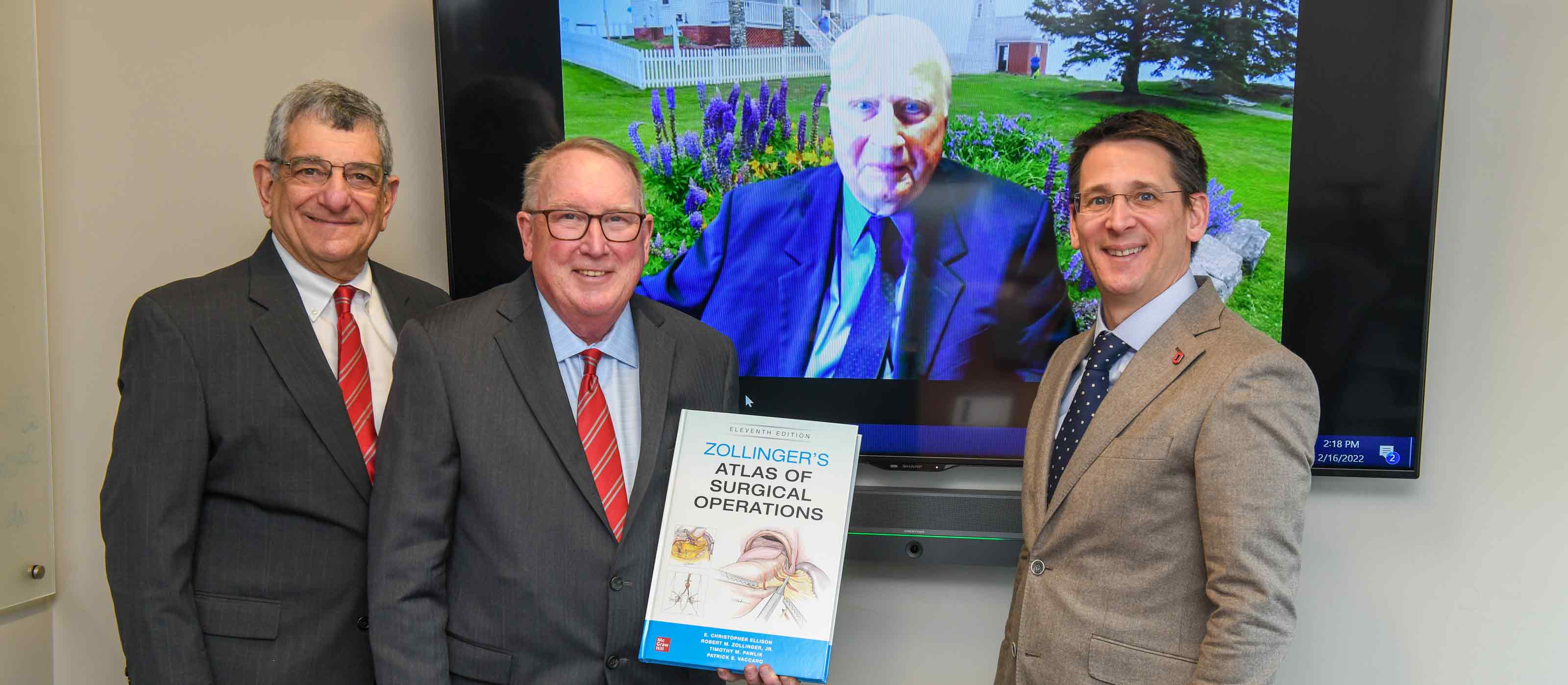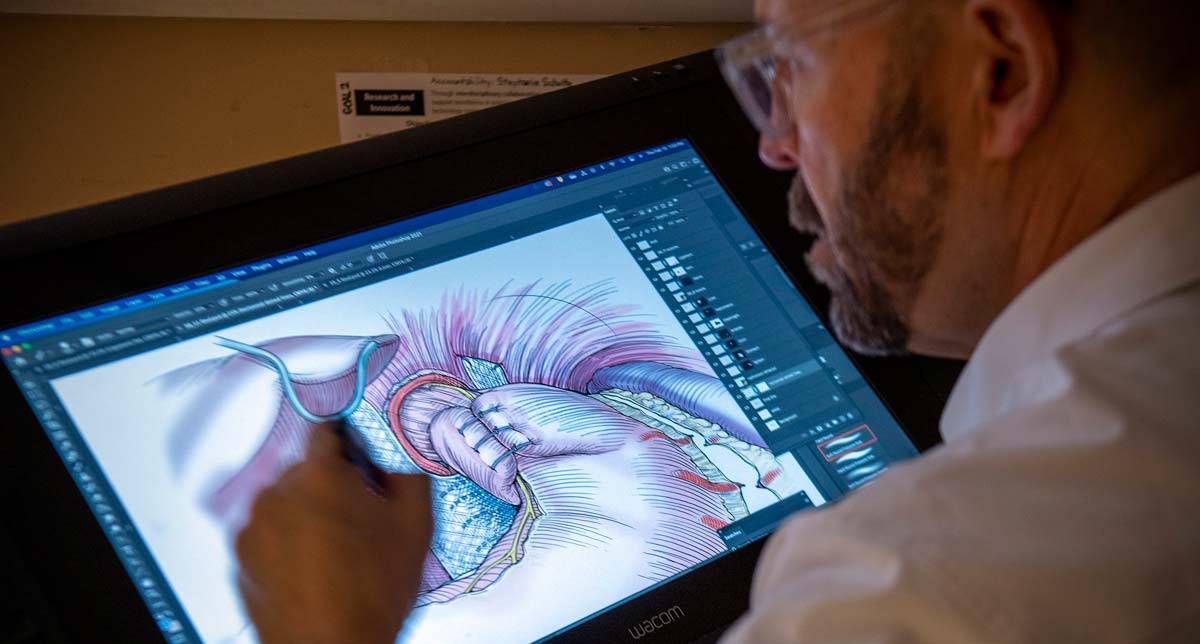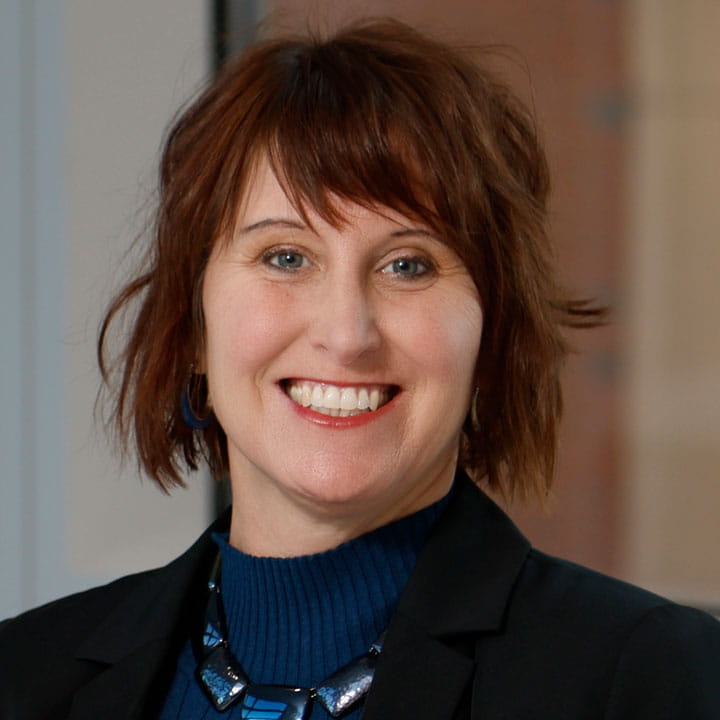Ohio State surgeons shape the international gold standard atlas of surgical operations
With 11 editions, the Zollinger’s Atlas of Surgical Operations is used by surgeons the world over.
Zollinger’s Atlas of Surgical Operations, first published in 1939, has continued to evolve through 11 editions. As a result of the advances in surgical technology and procedures, the newly published 11th edition of the atlas, released in late 2021, includes more than 160 surgical operations, as compared to just 64 in the first.
Used around the world, it’s coined the “gold standard” surgical atlas for learning how to perform the most common general surgical procedures using safe, well-established techniques. The story of its inception and evolution over 80 years is rich in innovation and history — history that encompasses The Ohio State University itself.
The first edition of the atlas was conceived and developed by two giants in the world of surgery: Elliot Carr Cutler, MD, surgeon-in-chief at Harvard Medical School’s Peter Bent Brigham Hospital (PBBH), and Ohio State’s own Robert Zollinger, MD. Zollinger served as chief resident and then as chief of surgery for Harvard’s 5th General Hospital in World War II. Following Cutler’s death in 1947, Zollinger returned to Ohio to serve as chair of the Department of Surgery at The Ohio State University College of Medicine until 1974.

From left to right: Drs. Patrick Vaccaro, E. Christopher Ellison and Timothy Pawlik serve as authors of the Atlas. They are joined virtually by co-author Dr. Robert Zollinger Jr.
The idea for the atlas was born from a student surgical course Cutler and Zollinger developed together, where Harvard medical students would rotate through various surgical duties as they performed basic surgical procedures and techniques on animal subjects, which was the standard training method at the time. The two conceived a text with illustrations of common operations for general surgeons in training and in practice. The authors determined from the book’s inception that medical illustration would play an important role in the atlas and serve as a visual guide to the procedures. The first edition was organized to align text and illustrations to be viewed simultaneously from the surgeon’s point of view.
Mildred Codding, medical illustrator and student of famed Max Brödel of Johns Hopkins University, created the illustrations on “scratchboards” of thick chalk using pen and ink. Any errors or changes were scratched away, essentially erased, thus allowing new ink lines. The first edition had 84 plates with several illustrations and labels that covered 64 common general surgical operations. It began with tonsillectomy and ended with midthigh amputation.
Zollinger brought the atlas to Ohio State, and a year later, established the Ohio State Department of Medical Illustration. He realized the potential for professional visualizations in the teaching of surgery. This new department created not only illustrations for the atlas, but illustrations for medical publications, color slides for lectures and movies for national meetings, all of which elevated Ohio State’s Department of Surgery to a national presence. The atlas also launched the careers of many new medical illustrators, beginning with Paul Fairchild, who had a 42-year career as a medical illustrator and medical graphic design artist, primarily at Ohio State.

Illustration panels of anatomy involved in hernia repair surgery.
In 1967, Zollinger added his son, Robert Zollinger Jr., also a Harvard/PBBH-educated surgeon and now a professor emeritus at Case Western Reserve University, as co-author.
In 2009, in preparation for the 9th edition, the now-retired Zollinger Jr. asked E. Christopher Ellison, MD, FACS, Robert M. Zollinger Professor of Surgery Emeritus, to become co-author. Ellison has a long and storied career at Ohio State, having served as chair of the Department of Surgery and interim dean of the Ohio State College of Medicine. He was the most obvious choice to take the reins.
In the 9th edition, color was added. “In addition to color, the 9th edition included laparoscopic procedures,” Ellison says. “It ran 532 pages, covered 230 procedures and, for the first time, it was also released as an online resource as an app.”
When the 10th edition published in 2016, it was apparent to the authors that general surgery had evolved into several subspecialties, so Ellison constructed a panel of Ohio State surgeons to serve as associate editors. With their expertise on procedures and surgical operations, they organized the atlas into chapters based on organ systems and converted some content to a digital version.
“Over the years, as surgical techniques evolved, we worked together through eight editions to ensure the Atlas’ illustrations reflected the complexity of the expanded list of surgical procedures,” Zollinger Jr. says.

One of the more than 160 surgical operations in the 11th edition of Zollinger’s Atlas of Surgical Operations.
Zollinger Jr. says that adding authors with specializations was necessary to ensure content remained current and accurate. “We’ve added updated techniques that have changed,” he says. “Like adding staplers when they became important for closing incisions and laparoscopic procedures.”
With the 10th edition, the authors introduced the Video Atlas of Surgical Operations, which was made available online and edited by David Renton, MD, a surgeon at the Ohio State Wexner Medical Center who specializes in minimally invasive and robotic surgery. The video atlas includes the 10 most-performed laparoscopic procedures, formatted to follow the steps outlined and illustrated in the text. This brought the atlas to life.
For the 11th edition, two additional senior authors were added: Timothy Pawlik, MD, The Urban Meyer III and Shelley Meyer Chair for Cancer Research and chair of the Department of Surgery, a noted authority in hepatopancreatic biliary surgery, and Patrick Vaccaro, MD, MBA, former director of the Division of Vascular and Surgery.
Taking medical illustration into the digital age
Ellison and Zollinger also introduced robotics and innovative techniques used in endovascular surgery. They hired a new principal medical illustrator, Anthony Baker, who leads the Medical Visuals department located in The Ohio State University Health Sciences Library, to create 150 new illustrations to accompany the 14 new chapters.
To adequately illustrate the highly technological equipment in these new chapters, Baker departed from the traditional pen-and-ink approach of previous editions, employing a modern digital illustration technique. To complete the illustrations, he would observe live surgeries, take photos, record videos, write out a description of the illustration, draw a sketch and meet with atlas authors to review before revising, creating final line art and adding color.

“For the chapter that illustrates how a robotic surgery suite is set up, I took pictures, then used a 3D wire frame model of the equipment to set the scene,” Baker says.
Today, in addition to the print version, many medical residents use the electronic version, which includes videos of the most commonly performed operations in the atlas.
In online reviews and through letters sent to the authors over the years, there has been a tremendous outpouring of gratitude for this work. Comments such as “It helped me pass my boards” and “I brought a copy into the OR and followed along as I performed my first appendectomy” serve to validate its continued relevancy and importance.
The archival collection of Zollinger’s work and many of the original printing plates can be viewed by scheduling a tour of The Ohio State University Health Sciences Library’s Medical Heritage Center in Prior Hall.

When you give to The Ohio State University Wexner Medical Center, you’re helping improve lives
We’re committed to making advancements in research, education and patient care that will have an impact throughout Ohio and the world.
Ways to Give




